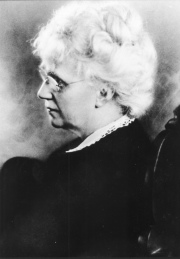Back a lifetime or so ago, when I was just starting out as a journalist, people used to call the newspaper and complain that reporters or editors were giving unfair or undue attention to a particular school, or sports team, or business in town. Some of these callers insisted it was a conspiracy.
“You’ve always liked North high school better than ours, that’s why they get all the publicity!”
Usually, I’d just smile and think, “Well, it could have something to do with the fact that the president of the North PTA knows how to pick up the phone and call us with the news and you don’t.”
In the newsroom, we’d joke about the conspiracy theories.
“Yeah, right, like we have time to hatch a conspiracy. We’re lucky to get the newspaper out every day. We print the news, whatever it is. Who keeps track of how much coverage one school gets compared to another?”
Apparently, some people do. Even some politicians called to complain too, and they sometimes would count lines or words and note that we gave their opponent “extra” coverage. “You’re biased,” they’d cry. Or, just maybe, we countered, the opponent had something more newsworthy to say. (Or in the case of Donald Trump … oh, well, never mind …)
We tried to keep a balanced perspective. We tried to make sure our coverage was spread among schools, teams, city halls. But sometimes we made judgments based on “news” or “deadline” or, frankly, “time” and we went with what we had whether or not every single angle was addressed. We did the best we could at the time.
It was impossible to keep everyone satisfied.
I’ve been thinking about that this week during a research trip to see a former Children’s Mercy doctor who took on the role of “ex-officio historian” during his time in Kansas City. He’s retired now and living in Boise, ID, most of the year, close to a couple of grandsons. I’ve learned a lot this week and I’ve made copies of dozens of pages of materials he managed to collect during his unofficial work to uncover our history.
There have been lots of stories written about our founders, Alice Berry Graham and Katharine Berry Richardson. There have been two history books published and another one written, but not published. There are lots of newspaper articles and a few journal pieces that tell bits and pieces of the sisters’ story. No publication has everything. And while I am trying to compile the “comprehensive” story for The Book, my writings will not have everything either. The other books have their shortcomings, I am discovering, but I’m sure they did the best they could at the time with what they had.
No doubt, I will leave something out, too, that someone thinks is important. They could be unsatisfied with the final product. But I won’t be doing it because of any conspiracy. I want to tell the best possible story … the best possible story that the facts support, of course.
And therein lies a “problem.” One of the things I have learned during this process, and it has been reiterated this week in Boise, is that there is sometimes more than one version to a story that someone claims is “the truth.” (The same can be true during most political campaigns — but that’s a whole different discussion!) As a case in point, I just found a new version of the story of Katharine’s marriage to James Ira Richardson in the summer of 1893.
In two different sources, I read that after Alice’s husband — the elusive Mr. Graham — died, she moved to La Crosse, Wisconsin to be with her sister and her husband. But it turns out, if this new source is correct, Alice moved before her sister became a Richardson. In fact, she’d already set

up her dental practice before the nuptials. The wedding, it seems, was something of a spur of the moment event — which also sheds new light on the strict, serious-minded youngest Berry sister.
An article on the front page of the La Crosse Daily Press, Aug. 10, 1893, headlined “A Matrimonial Surprise” explains it this way:
“The many friends of Dr. Katharine Berry will receive with feelings of pleased surprise the announcement that she was married last evening to Mr. James I. Richardson of Eau Claire. The interesting ceremony was conducted by Rev. Henry Kingham [an Episcopalian] at the office of the bride’s sister and only the following friends were present: Mr. and Mrs. Richardson, of Eau Claire, parents of the groom; Mr. and Mrs. James McCord, Mr. and Mrs. H.F. Bacon, Mr. and Mrs. J.B. Canterbury, Mrs. W.W. Crosby, Dr. Abby Adams and Mrs. Pousland.
“Mr. and Mrs. Richardson departed at 10 o’clock for Chicago and the world’s fair, after which they will take quite an extended western trip”
It’s possible that western trip included a visit to Kansas City — but that may or may not be true. My source in Boise says the wedding took place with very little advanced planning, which might explain the small crowd.
Some details we may never know. But I keep digging. And if there is one thing I have come to believe beyond a shadow of a doubt: there’s always another story around every corner and under every rock. You just keep digging. Someday, though, you have to stop.
But I’m not even close.
I am a Richardson descendant and was so glad to find this article. The story of James Ira and Katharine has me intrigued and I can’t find much about that union or what happened to the marriage, etc.
LikeLike
I am thrilled to hear from you. Elsewhere in the blog and in the book I tell more of the story. I would love to hear more family stories of the Richardsons. Can we connect? Send me an email at Thomas.McCormally@gmail.com. Thank you.
LikeLike